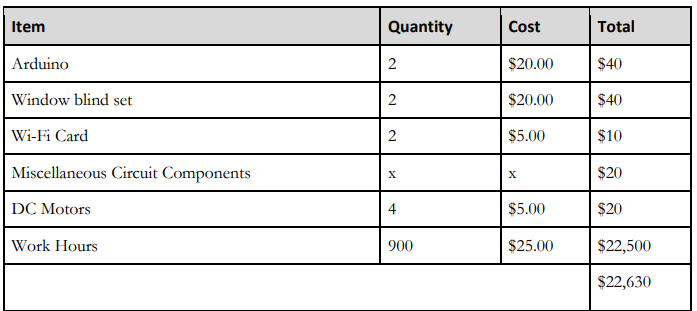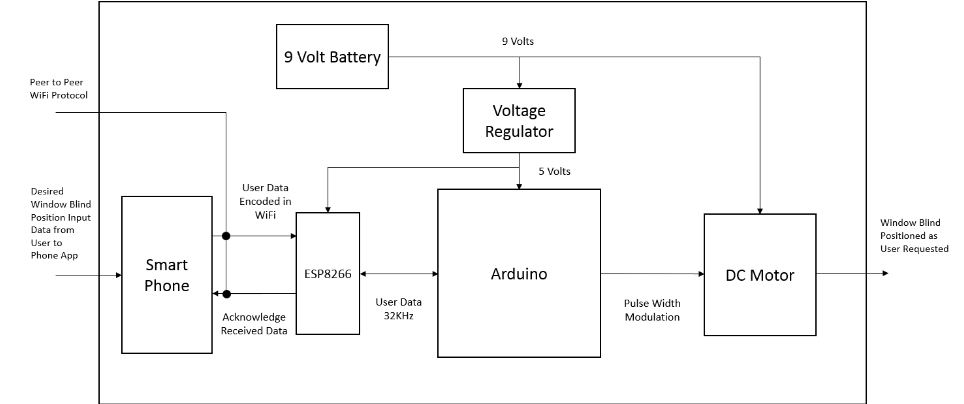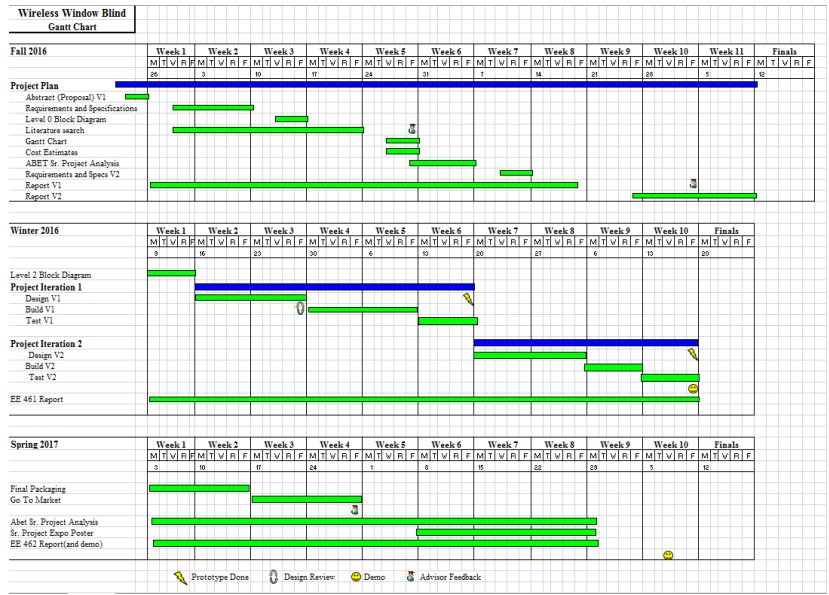ABSTRACT
The Internet of Things asserts that there exists a global need for all objects to connect easily and accessibly. Today, smartphones, tablets, laptops and smart watches makeup just a few of the interconnected devices by the greater population. As a result a growing need for wireless connection between personal devices like phones, and computers to everyday appliances exists. This idea extends directly to households, businesses and buildings, where a growing need for smart home or smart – business appliances has taken root. Many companies like Nest, ADT and Apple make products for automated home security and in home media control.
The Wireless Window Blinds project aims to provide smart home technology to window blinds. The Wireless Window Blinds gives users wireless control over pre – existing wireless blinds. Users, through a mobile device app, have direct control over basic window blind functionality: opening, closing, raising and lowering window blinds. Additionally, users have flexible control over any number of blinds across any number of rooms. The app allows users to easily open and close all their connected blinds remotely. This project strives to create a self – contained system that gives users wireless, automated control of a network of window blinds.
CUSTOMER NEEDS, REQUIREMENTS, AND SPECIFICATIONS
Customer Needs Assessment
We acquired the customer needs through market research of current window blind systems as well as questioning home owners and company owners about what they would want out of a wireless window blind controller. Homeowners with smartphones and Wi – Fi represent the primary portion of the wireless window blinds target customers, so we weighed their response heavier than the company owners.
From talking to homeowners, they need an aesthetically pleasing and easy to install system with a good battery life. The smart phone app must provide users with an easy to use interface for raising, lowering, and tilting blinds. Additionally, the complete system must scale to support any number of windows the customer may have. Currently, market motorized blinds cost between $250 to $300, but many owners who want to upgrade their house search for the cheapest solution.
FUNCTIONAL DECOMPOSITION

figure 2 : Level 0 Wireless Window Blinds
The level zero block diagram appears below in Figure 2. It outlines the overall inputs and outputs of the system. The inputs to the system include user input from the smartphone app and the connection to WiFi between the app and controller. The output of the system includes a pulse width that changes the orientation of the window blinds based on the user input. Additionally, the smartphone app connects to multiple controllers allowing network control of any connected window blinds in the home. The implementation of the network software and structure takes consideration of the patent on connection of multiple IoT devices.
PROJECT PLANNING
Gantt Chart
The Gantt chart below shows a design approach to the Wireless Window Blinds. This chart gives detailed tasks and milestones from EE 460 through EE 462 dictating the flow of the project. It includes multiple project iterations as well as the EE 461 and 462 Report and Demo deadlines.
Table IX shown below lists the items, quantity, and costs associated. This project requires at least two sets of window blinds to create a network of blinds all controllable from a single smart phone. Since each member of the group already owns a smart phone, this item added no additional cost. The estimated Labor Costs arose from Ford and Coulston’s Cost Model averaging the worst case (12 hours per week), best case (3 hours per week), and most likely case (8 hours per week). This led to 7.8 hours per week with four members working together over three quarters. 30 weeks multiplied by 4 people and 7.8 hours per week led to 900 Labor hours.

Table X : Wireless Window Blinds Cost Estimates
Source: California Polytechnic State University
Authors: Cooper Laone | Zachary Malig | Niraj Morar |Jake Phillips
>> Latest 50+ IoT based Security Projects for Engineering Students
>> 200+ IoT Led Projects for Final Year Students
>> IoT Software Projects for Final Year Students

